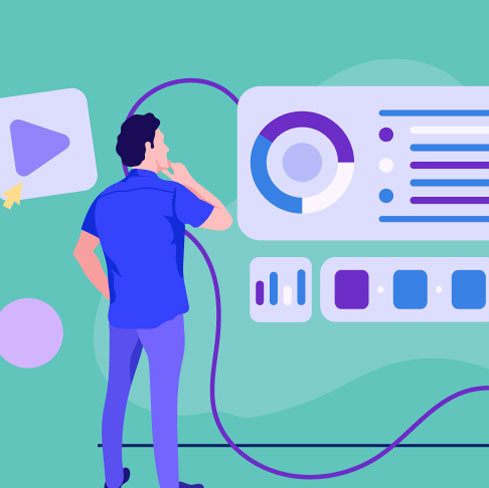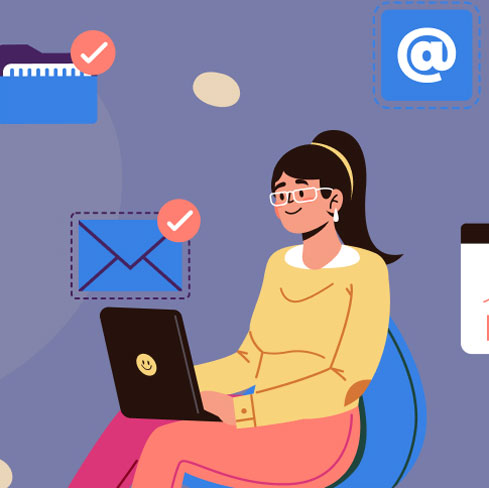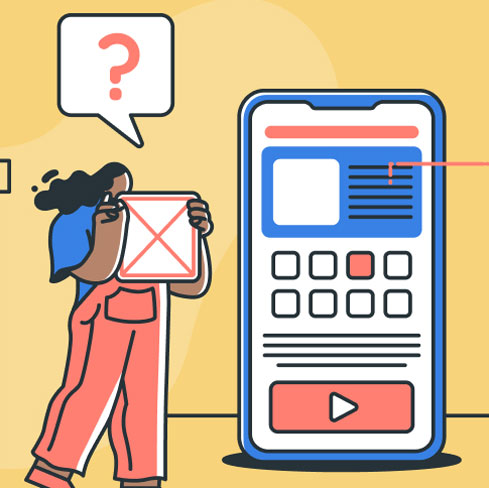The Psychology of UX Design
December 13, 2018 | Read Time : 3 mins
Table of Contents
It’s not a secret that a lot of what drives human behaviour lies in the subconscious. In the mere milliseconds that your eyes take to blink, millions of neurons light up in your brain, and you make hundreds, if not thousands of subconscious decisions, simultaneously.
When a user encounters your product, it receives its trial, judgment, and final sentence, in just the blink of an eye. The way you design your website or app has the power to influence how your audience uses and perceives it.
So, how do you get inside their heads? How do you make every millisecond count? What’s the connection between psychology and UX design? Read on to find out!
The Psychologies of UX Design and Their Impact on Users
Impact of Subconscious on User Satisfaction
Most often, users tend to trust their gut instincts which is why if an offer seems too good to be true, they reject it. Psychologists have concluded that the goals which direct most of our behaviour are activated by our subconscious mind!
It is essential to communicate that your product or brand meets the psychological goals that activate the reward centre of consumers’ minds. UX researchers and designers have identified eight broad categories or “implicit motivations” that drive how users perceive and connect to products.
These motives are:
- Belonging
This motivation involves appealing to the empathy and emotional attachments that users have. It promotes collaboration between users or leverages the power of commitment or consistency to persuade users to use the product.
- Certainty
Nobody likes uncertainty! Brands that exude safety, security, stability, and longevity have a significant advantage over those that lack credibility. Businesses can use simple techniques to represent tradition or certainty, like including a prominent founding date on their app or website.
- Power
This motivation appeals to emotions like authority, prestige, and competitiveness. This technique is often tapped into by brands involved in the gaming app niche with scoreboards or luxury airlines and hotels that create the impression of exclusiveness on their sites.
- Individuality
This motivation is used to appeal to the sense of originality and autonomy. Websites and apps that allow users to customize the interface or products, connect with this emotion.
- Physiology
This aspect of psychology involves appealing to good health, both mental and physical, and the desire to live in a pollution-free world. Including a calorie tracker in a food-ordering app or a planting tree for every 5 items you buy, are some examples.
- Self-Development
This motivation includes understanding how mechanisms work, purpose, and critical questioning. Users appreciate aspects that help them achieve a meaningful and purposeful existence. UX design aspects could include news snippets, riddles, or powerful quotes.
- Recognition
Being noticed and respected by others, gives users the feeling that they’re valued. This is perhaps the foundation for many social media platforms and online forums where user participation is encouraged through likes, comments, shares, upvotes, downvotes, and even awards!
- Belongingness
This emotion relates to the intimate connections that people have with their loved ones. It also includes family bonds, and brands can connect to this subconscious aspect through imagery rather than words. Think of an online retail store with a huge picture of a happy family on its banner!
Impact of Shape and Contour on Consumer Perception
All the visual objects that we see around us, including websites and apps, can be perceived as distinct shapes or a combination of them. There is a certain psychology behind every shape we see that triggers a unique emotional response.
For example, sharp angles are considered dangerous, or a threat, whereas rounded or curved shapes are seen as amicable, gentle, or soothing. Here’s what each shape means:
- Squares and rectangles
Formed by straight lines and right angles, these shapes exude a sense of reliability, security, and consistency.
- Triangles
These are used to evoke a feeling of movement, dynamism, and balance. Its sharp edge can be used to draw attention towards something or direct the user’s view to a focal point.
- Circles, Ovals, and Ellipse
These shapes don’t have angles, and are hence perceived as softer and milder as compared to geometric shapes with defined edges. These shapes are used in UX design to give the users a warm, inviting feeling. They also represent unity, protection, and completeness.
- Pentagons, Hexagons, and Octagons
These are most often used for logos, or in large compositions to represent elements from our real lives like street signs, beehives, interlocking puzzles, or nuts and bolts.
Impact of Spatial Structure on User Experience
The spatial structure of your website or app will undoubtedly affect how users experience it. For example, using white spacing around the content on your website gives it a clean and simple aesthetic, which helps users focus on the content, instead of a flamboyant border.
Keeping the design of the interface simple, and keeping your services, products, and brand front and centre, will help people orient themselves and focus on what they’re looking for.
In the world of UX/UI, there’s been a shit to simpler and less cluttered interfaces. It has also been determined that these minimalist designs outperform more complex and flashy designs, in terms of task completion rates. Visual clarity impacts purchasing decisions, and sites or apps that immediately convey their purpose help retain users.
The Serial Position Effect by Herman Ebbinghaus, states that users tend to remember the first and last items in a series better. In terms of spatial structure, this means that designers should place the most important information first and last, with the least important information in the middle, to grab the attention of users.
Impact of Color on User Impression
A website’s tone is primarily established by its colour palette and these colours have a significant impact on user impression. For example, professional sites use a classy combination of dark colours like black, navy blue, and brown, whereas, interactive sites use vibrant colours like red, yellow, and orange to entice users.
Cool colours like green and blue are associated with calmness and nature, whereas warm colours like red, orange and yellow, depict powerful emotions like passion, excitement, and happiness, respectively.
In addition, contrast and luminance can be used to highlight or downplay certain information. Most often, this colour theory is utilized for call-to-action buttons. The colour theory also recommends balancing the web site’s colour palette with 60 per cent of the dominant colour, 30 per cent of the secondary one, and the remaining 10 per cent for the accent.
Since the latter is used the least, it is the most eye-catching. Similarly, muted colours can help users determine what information is less important. For example, the footers of most sites are in a neutral colour to show that it is different from the rest of the page. Therefore, colours can be leveraged to impact a user’s impression and help the focus or de-prioritize the available information.
Summing It Up
UX design is conceptually rooted in cognitive and behavioural psychology, and this gives designers a blueprint of how the target audience will interact with the platform. By observing and understanding the needs of the end-users, designers can empathize with them. Improving UX design based on user behaviour, emotion, and interaction can add a lot of value to the end product, making it a masterpiece.






